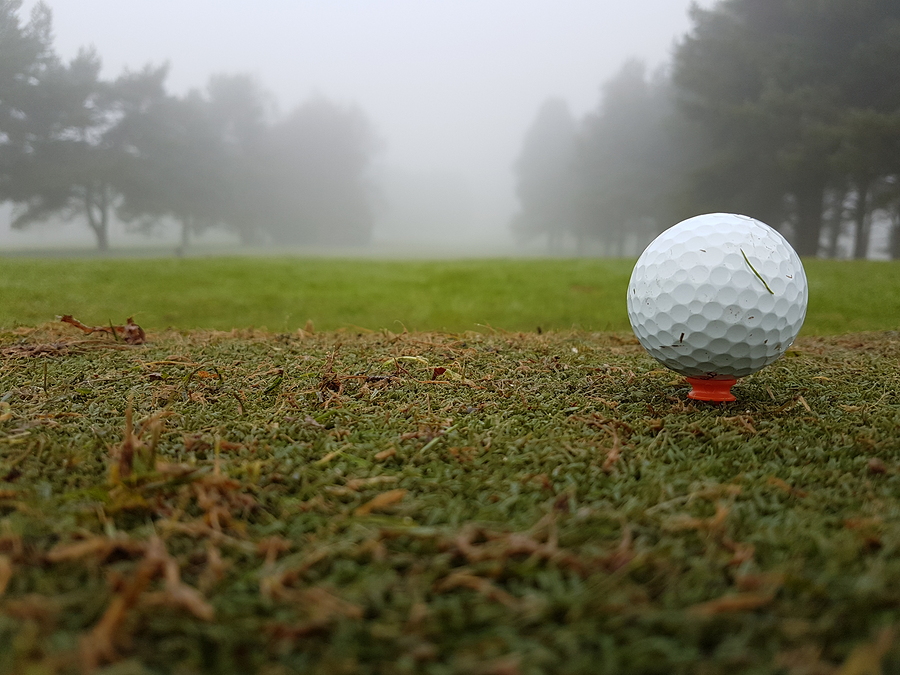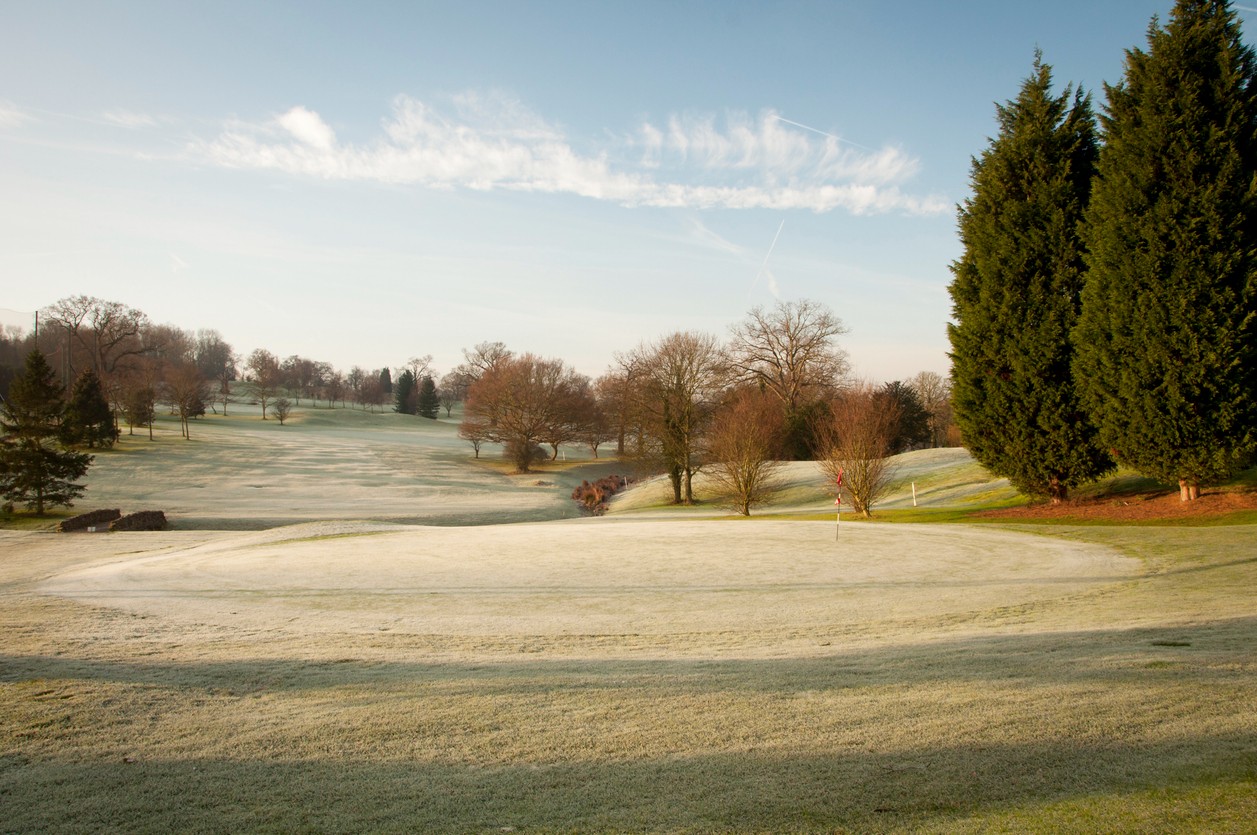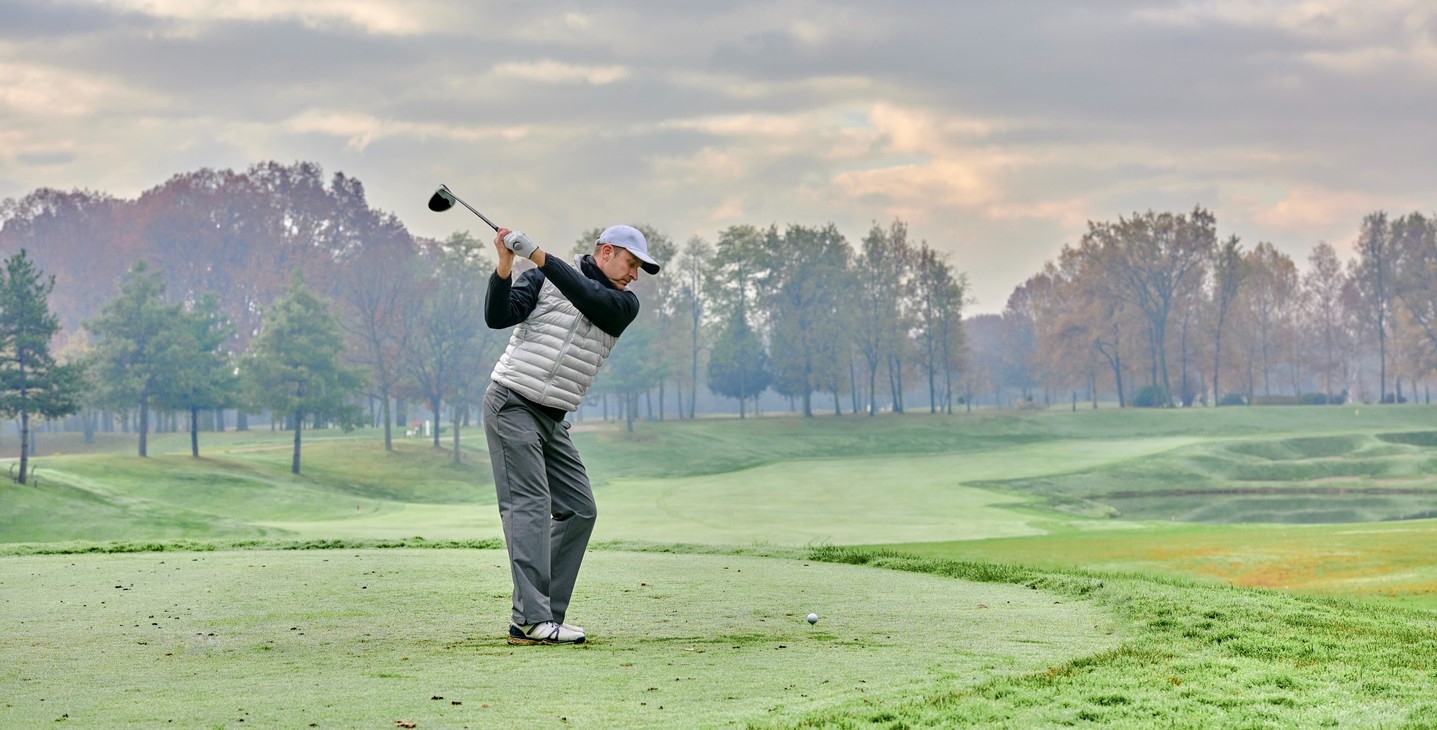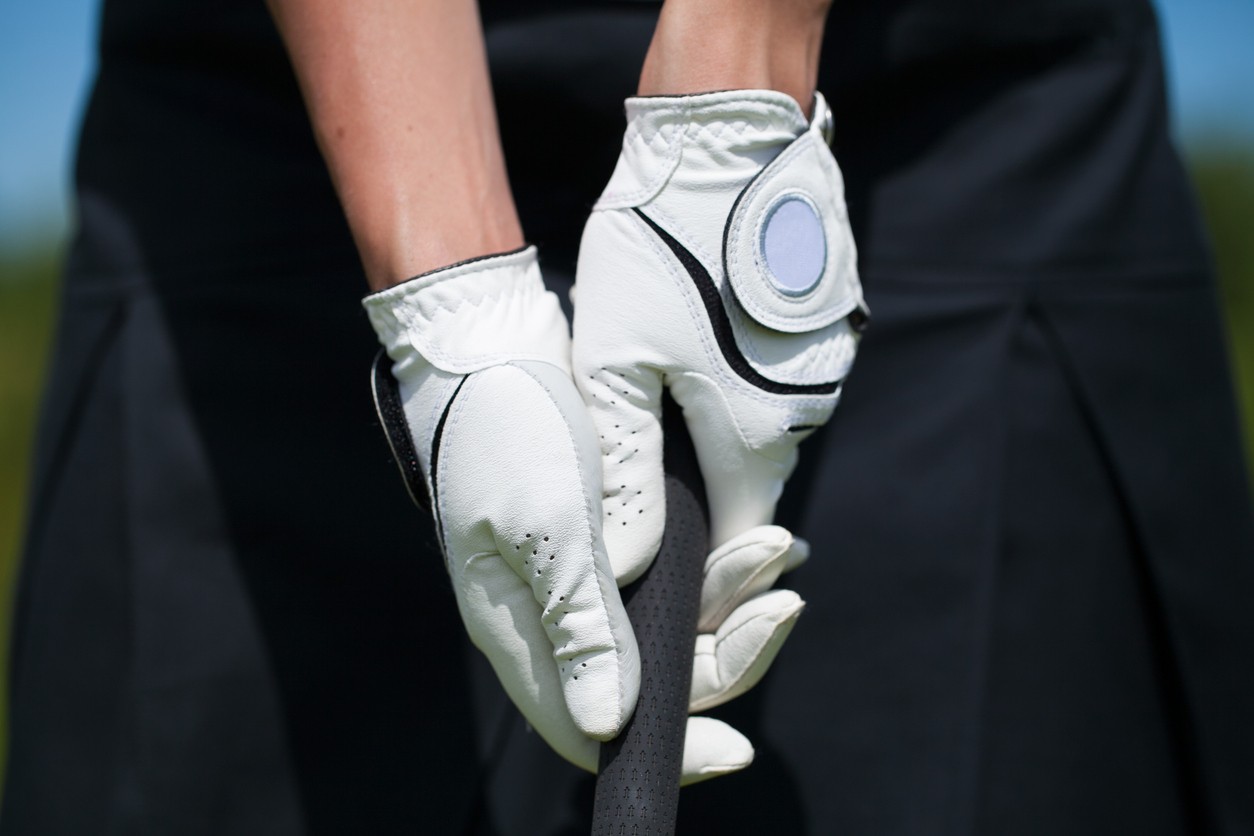Golf may conjure images of sunny fairways and balmy breezes, but for many golfers, the game continues even as temperatures drop and frost coats the greens. Playing golf in winter presents a unique set of challenges that demand adaptations in strategy, technique and equipment. The physics of golf changes significantly in colder weather, affecting everything from ball flight and distance to golf course conditions and player performance. In this blog post, we’ll look at the science behind these changes, equipping you with the knowledge to tackle winter golf confidently.
Temperature and Its Impact on Golf Ball Performance

Temperature is one of the most critical factors influencing golf in winter. As the temperature drops, the air becomes denser and increases the resistance your ball faces during flight. This additional drag not only reduces the distance your ball travels but also affects its trajectory. A golf ball that might carry 250 yards in warm weather could lose up to 15 yards in the winter simply due to the air’s density.
Beyond air resistance, cold weather also impacts the golf ball’s physical properties. Most modern golf balls are designed to compress upon impact, converting energy into speed and spin. However, on cold days, the materials that make up the ball—like rubber cores and urethane covers—harden and lose some of their elasticity. This means the ball doesn’t compress as effectively, reducing the energy transfer from your club to the ball. The result? Lower ball speeds, less spin and shorter distances. To mitigate these effects, many golfers switch to softer, lower compression balls during the winter months. These balls are easier to compress in cold weather, helping to maintain performance.
Another often-overlooked factor is the temperature of the golf ball itself. A cold ball performs worse than one kept at room temperature. If you’re playing on a colder day, it’s a good idea to store your golf balls indoors before your round and keep a spare in your pocket to keep it warm during play.
Wind: A Winter Golf Wild Card
Wind always affects golf, but its impact is amplified in winter due to the denser air. Denser air increases the drag force acting on the ball, which magnifies the effect of wind. A headwind will reduce your ball’s distance more significantly while a tailwind may not provide as much assistance as you’d expect. Similarly, crosswinds can push the ball further off course, making accurate trajectory control more challenging.
The physics of spin also becomes more critical in winter winds. In crosswinds, for instance, sidespin on the ball is exaggerated, leading to more pronounced hooks or slices. This makes it crucial to strike the ball cleanly and reduce unnecessary spin. Additionally, the colder temperatures can make it harder to generate the high clubhead speeds needed to pierce through the wind. Many golfers compensate by playing lower, more controlled shots designed to minimize wind interference. Choosing a lower-lofted club can help you keep the ball’s flight path closer to the ground, reducing the amount of time it’s exposed to the wind.
Strategically, winter wind challenges call for thoughtful planning. Consider how the wind direction and strength will influence each shot and adjust your target line accordingly. For approach shots into the wind, aim to land your ball short of the green, as the wind will often reduce its carry. Conversely, with a tailwind, factor in the extra carry and adjust your distance accordingly. Mastering these adjustments can make a big difference in your winter golf performance.
Moisture and Course Conditions

Winter golf often means dealing with early morning conditions such as a wet, frosty or even icy course. These changes in the playing surface have a profound effect on how your ball behaves after landing. Wet conditions significantly reduce roll, as the moisture creates more friction and slows the ball down almost immediately. This loss of roll can dramatically shorten your total shot distance, even if your carry distance remains consistent.
On the greens, cold mornings with frost and ice introduce another layer of complexity. Frost can make greens hard and slippery, reducing the amount of spin your ball generates upon landing. This can cause approach shots to roll out more than usual, making it difficult to control where the ball stops. On the other hand, as frost melts throughout the day, greens can become soft and uneven, leading to unpredictable bounces and slower roll speeds during putting. Navigating these challenges requires close observation of the course conditions and adjusting your strategy as needed.
Dormant grass, a common sight in winter, also impacts play. Grass growth slows significantly in cold weather, meaning fairways and greens are less manicured than in summer. The turf becomes less resilient, making divots more pronounced and harder to repair. Additionally, icy or muddy bunkers can make recovery shots more challenging. To adapt, focus on accuracy over power, and avoid overly aggressive shots that could leave you in these difficult lies.
The Physics of Your Swing in Cold Weather

Your swing is at the heart of your golf game, and cold weather impacts how your body performs and how your equipment feels. Cold temperatures cause muscles to stiffen, which reduces your flexibility and range of motion. A restricted range of motion can disrupt your swing mechanics, particularly your ability to complete a full backswing or achieve maximum rotation in your follow-through. This stiffness not only reduces clubhead speed but also increases the risk of injury if you attempt to over-swing to compensate for lost distance.
Beyond physical effects, the cold changes the feel of your equipment. Metal shafts and grips can feel uncomfortably cold, which may lead to a tighter, less relaxed grip. Tension in your grip often translates to tension in your swing, leading to reduced fluidity and power. Additionally, hitting a golf ball in cold weather often feels harder and more jarring because both the ball and the clubface are less responsive at lower temperatures. This can make clean contact even more critical, as off-center hits become more punishing.
To combat these challenges, an extended warm-up is essential before starting your round. Take time to perform dynamic stretches that target key muscle groups like your upper body, back, and hips. Swinging a weighted golf club or taking extra practice swings can help loosen your muscles and establish a smooth tempo. During your round, focus on maintaining a relaxed, controlled swing. Resist the temptation to over-swing, as this can lead to inconsistency and fatigue. Instead, consider using one or two more clubs than usual to make up for the reduced distance, allowing you to swing comfortably without exerting extra force.
Equipment adjustments can also make a difference. Winter gloves, which provide additional grip and insulation, help maintain dexterity. Some golfers prefer using graphite shafts in winter because they dampen vibrations better than steel, offering a more comfortable feel during impact. Paying attention to these details can help you preserve both your performance and your enjoyment of the game.
Adapting Your Game to Cold Weather

Playing golf in winter requires more than just technical adjustments; it demands a shift in mindset and strategy. The key to success lies in preparation and adaptability. Dressing appropriately is the first step. Layering is crucial, with thermal base layers to keep sweat off your skin, insulating mid-layers for warmth and a windproof outer layer to shield you from the elements. In some parts of the country, you’re dealing with cold rainy days on the golf course, so it’s important to have proper rain gear. Don’t forget accessories like winter hats, winter golf gloves, hand warmers, thermal socks and an extra towel, all of which can make a significant difference in your comfort and performance.
From a strategic standpoint, winter golf rewards precision and consistency over power. Focus on hitting fairways and greens rather than trying to maximize distance. Pay close attention to course conditions, as wet or frosty areas can significantly affect how your ball reacts upon landing. Take advantage of winter-specific equipment, like softer golf balls and insulated bags to keep them warm.
Finally, embrace the mental challenges of winter golf. Cold weather can be frustrating, but it’s also an opportunity to refine your skills and build resilience. Approach each round with realistic expectations, focusing on small victories and enjoying the unique beauty of winter landscapes. With the right mindset and adjustments, winter golf can be as rewarding as playing in perfect summer conditions.
Be Prepared Mentally & Physically for Cold Weather Golf
Cold weather affects every aspect of golf, from the physics of ball flight to the feel of your swing and the conditions of the course. While winter golf comes with its challenges in weather conditions, understanding these changes and making strategic adaptations can help you thrive on the course. By preparing your body, adjusting your equipment, and approaching the game with the right mindset, you can continue to enjoy and improve your golf skills throughout the colder months. Don’t let the season stop you—embrace the challenge, and keep swinging.
